BMW 3 Series – A brief history
The most popular car.
Established in 1975.
Nothing quite says luxury like a BMW. The sleek body styles, added comfort features, and high performance are staples of the brand. The BMW 3 Series is no different and with over 14 million units built and is one of the best-selling cars of all time.
The BMW 3 Series debuted in 1975 and has gone though seven generations with the most recent being unveiled in 2018. The first generation was developed at a cost of 35 million Deutschmarks and was wildly successful selling over 1.36 million cars before BMW unveiled the second generation of the line in 1982. Each generation has surpassed the sales total from the first generation of the 3 Series, speaking to the popularity and quality of the German engineering.
Every seven to eight years BMW releases a new generation of the 3 Series, with each one transforming the model to match the era and ensuring that the brand stays up to date with all the latest technologies and features.
While the verdict is still out on the seventh generation of the 3 Series, although all signs are pointing in the right direction, there’s no doubt that the sixth generation was a highly successful luxury sedan. In order to understand why BMW sold more than 2.2 million of their sixth generation 3 Series automobiles, you must take a dive into the engineering and specifications behind it.

BMW E21 (1975–1983)

BMW E30 (1982–1994)
Exterior and Interior
The BMW 3 Series is similar in style to their fifth-generation predecessors, bringing many of the same cosmetic designs that BMW fans have come to know and love and making it instantly identifiable as a classic BMW.
And while the design is very similar to the fifth generation, BMW modeled its sixth generation slightly bigger in almost all aspects. The biggest impact of this is seen in their sedan models which offers more rear headroom, leg room, and shoulder room then their fifth-generation equivalent. Despite the added size the sixth generation BMW 3 Series weighs less then its fifth generation counterparts (depending on engine size) due to new lightweight materials used in the construction process, meaning that performance and fuel economy are improved despite it being a bigger vehicle.
One of the cosmetic changes that BMW spruced up was both the headlights and kidney grills were widened and now connect to each other. This change highlights the wider design of the vehicle, while ensuring that it still has the look of a powerful athletic sedan. Additionally, the tail lights switched to BMW’s elongated “L” design, which was already featured in many other BMW models and offers a much sportier look.
The sixth generation 3 Series still has the classic long wheelbase, sweeping bonnet, and short front overhang that are BMW 3 Series staples.
In 2015 BMW implemented a wide variety of changes to their 3 Series, one of which was switching their Xenon headlights and taillights with LED bulbs. While the LED bulbs are more expensive to replace, they typically last far longer and offer a sportier look that many BMW owners desire.
The 3 Series came in four different body styles, the Sedan (F30), the Wagon (F31), the Gran Turismo (F34), and the Long Wheelbase Sedan (F35). The F30 Sedan and F31 Wagon (also known as the 3 Series Touring) are the base model 3 Series, with the big difference between the two being that the Wagon is a five-door hatchback, which offers a little more storage space in the trunk. Additionally, the Wagon didn’t offer an all-wheel drive option until 2013.
The F34 Gran Turismo is slightly larger than the Sedan and Touring models. It is 200 mm (7.9 in) longer and 79 mm (3.1 in) taller than the Sedan and Wagon models. This added space allowed the rear wheels to be moved back farther, which allowed BMW to install three full size rear seats.
The F35 long-wheelbase sedan was produced in Shenyang for the Chinese market. While smaller than the Gran Turismo, it is still larger than both the F30 and F31 models. The reason for the larger size was to increase rear knee room by 90 mm (3.5 in).
Some interior options available in all BMW 3 Series include heated front seats, split-fold rear seats, satellite navigation and a widescreen display in the center console.
Some notable things that you won’t find in the sixth generation BMW 3 Series are the coupe and convertible models. They were removed from the 3 Series line and BMW added them to an all-new 4 Series production line.
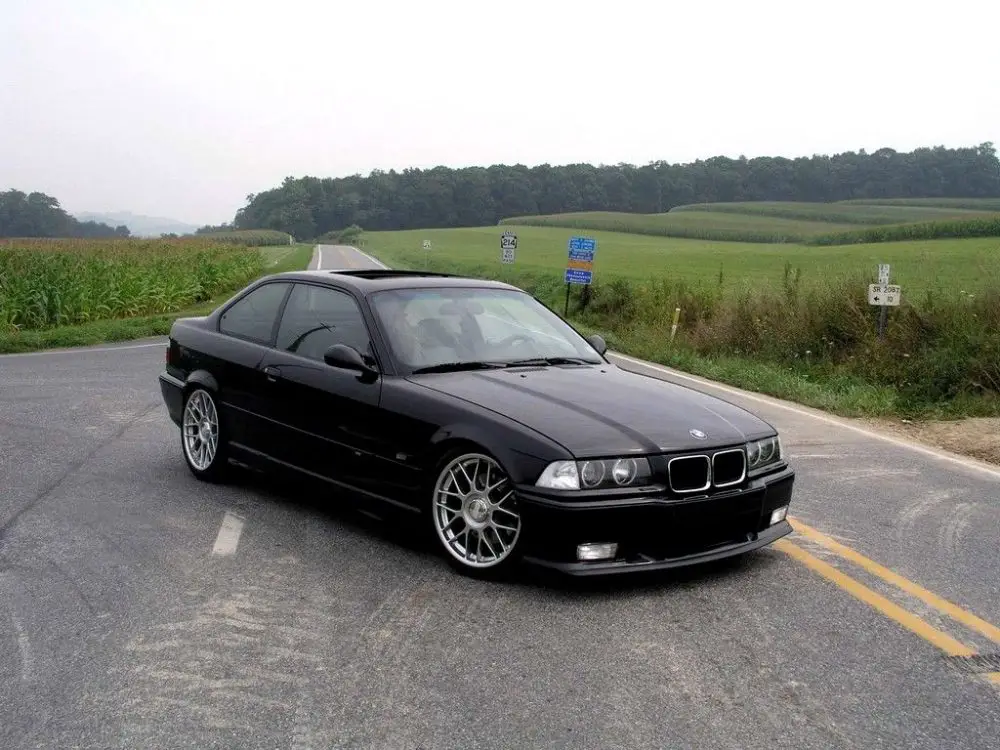
BMW E36 (1990–2000)
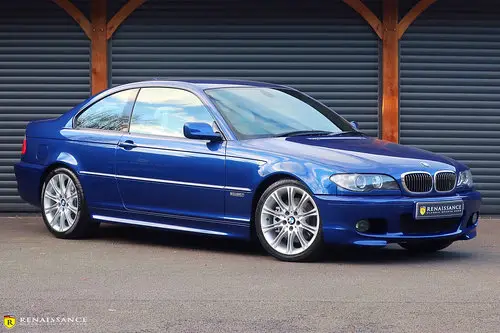
BMW E46 (1997–2006)
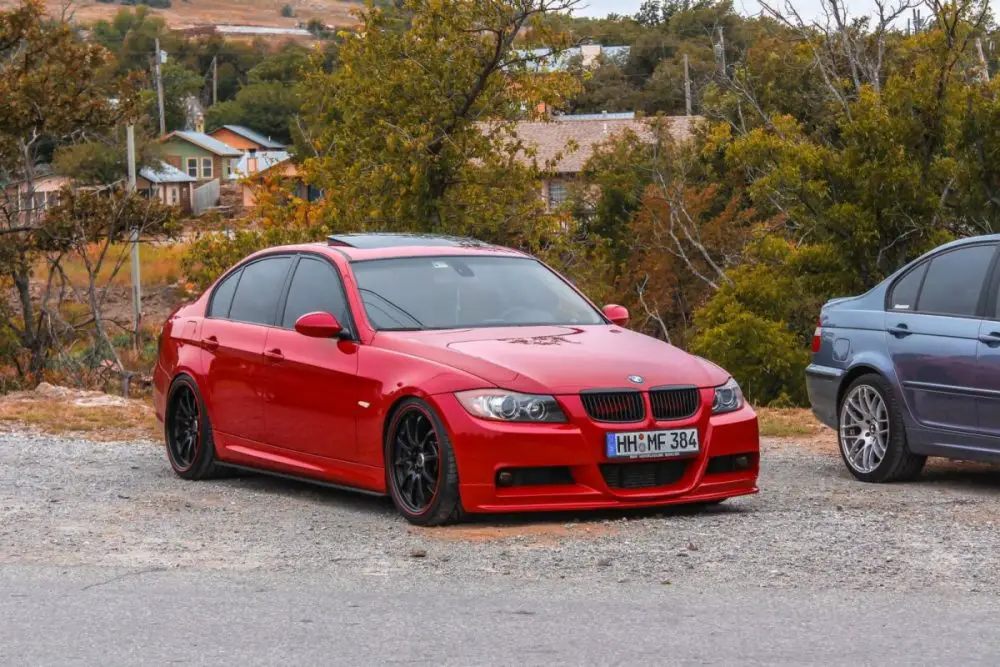
BMW E90 (2004–2013)
Driving the 3 Series
It’s responsive, powerful, and depending on the options in your specific car, comes with all the bells and whistles one would expect from a luxury sedan.
With an adjustable full color heads up display that is projected directly onto the windshield you can focus your attention on the road instead of constantly looking down at the dashboard. The location of this display can be precisely adjusted so you can put it in the perfect position for you. Of course, you can decide how much or how little information you want displayed on the windshield.
Your Collision Warning and Lane Departure Warning systems, which let you know if you are veering from your lane or about to get into an accident, will conveniently display right where you can see it before it’s too late. Your speed and navigation instructions can also be displayed allowing you to reach your destination without ever taking your eyes off the road. Of course, the intensity of the light illuminating the display automatically adjusts to your surroundings, so you don’t have to worry about it being too bright or not being able to see it at all.
As you’re driving you can queue up your favorite songs straight from your phone through the built in Bluetooth connection. With ConnectedDrive, BMW’s Bluetooth app, you can do more than just play your favorite music though, you can call up the weather, add appointments to your calendar, listen to and respond to text messages, and make phone calls, all hands free.
Speaking of hands free, we all know the feeling of trying to load up our trunk but can’t find a way to get it open because of all the stuff we are carrying. The BMW 3 Series has a hands free option to open your trunk. All you do is raise your foot under the trunk and the sensors will detect that it’s you and open the trunk for you.
And if parallel parking isn’t your thing, there is an option that will identify parking spots as you drive up to them and then navigate into that parking spot for you. All you do is control the accelerator and the brake.

BMW E92 (2004–2013)
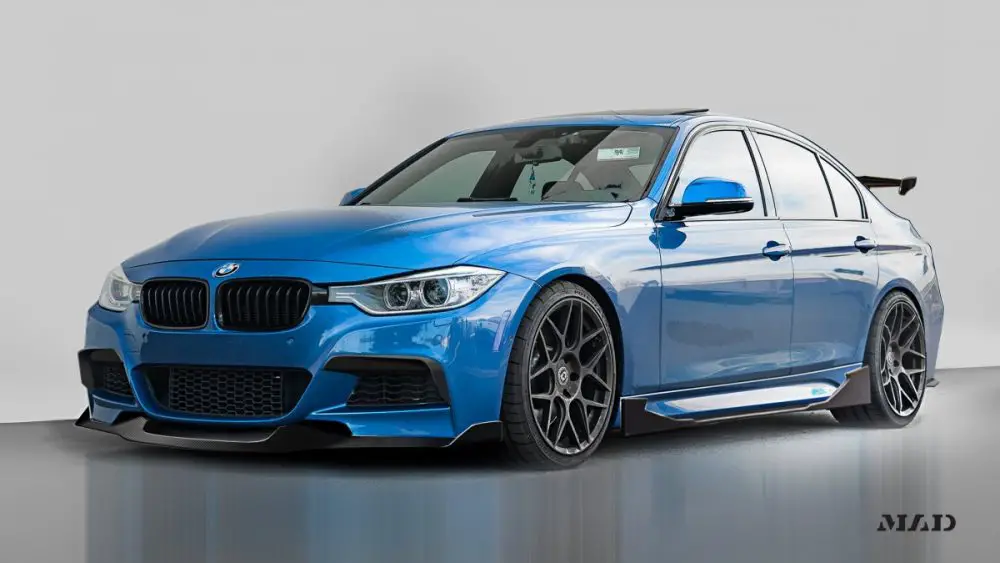
BMW F30 (2011–2019)
Safety
All sixth generation BMW 3 Series have performed extremely well on safety tests and are equipped with a multitude of safety features to reduce the likelihood of a collision to begin with. All 3 Series are equipped with front and side air bags for front seat occupants and both rows of seats are equipped with head airbags. As if that wasn’t enough the 6th generation 3 Series comes equipped with technology that automatically alerts first responders of the type and severity of a collision should one occur.
There are state of the art side view and rear-view cameras that can be used both individually and combined to make a bird’s eye view. These cameras are all easily viewable on the widescreen center console display. The bird’s eye view generates an image that makes it look as if you are looking directly down on your car, providing you with a view that shows everything around your car in one video. Additionally, the rear view camera shows your projected path and your maximum turning radius which allows you to navigate your BMW with precision.
Furthermore, there are tons of upgrades that BMW offers including adaptive headlights, which will turn as you round corners, providing you with a better view of the road. Additionally, the adaptive headlights will automatically turn on and off depending on ambient lighting, so you will never forget to turn them on or off again. Finally, the headlights are equipped with a function that will automatically turn off your high beams if there is oncoming traffic.
Of course, as it was previously mentioned there are options for both Collision Warning and Lane Departure Warning systems which greatly reduce the likelihood of getting into an accident. But if the Collision Warning and Lane Departure Warning systems aren’t enough there is an additional option for Blind Spot Monitoring as well. When someone is in your vehicle’s blind spot while you are driving, a light appears on the corresponding side mirror to let you know they are there. If you then turn on your turn signal a slight but noticeable vibration will come across the steering wheel and alert you of the vehicle’s presence.
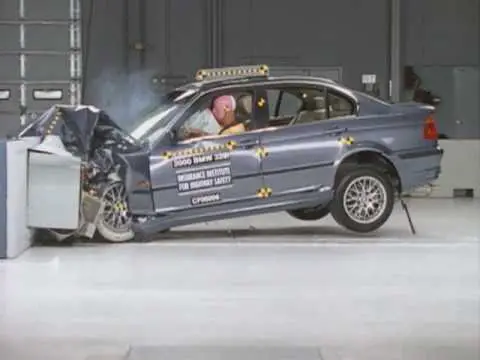
BMW E46 Crash Test
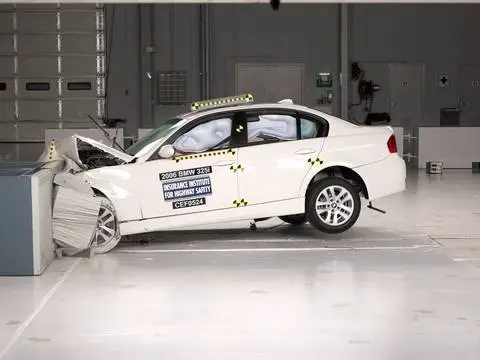
BMW E90 Crash Test
Performance and Specifications
And for the gearheads out there, there is a wide range of performance options available in the different 3 Series models. There are eight different petrol engines and six different diesel engines available, and every engine option is turbocharged.
The gasoline options range from 134 horsepower to 335 horsepower and deliver between 162 pounds and 332 pounds of torque depending on how fast you want to go. For the diesel options the horsepower ranges form 114 horsepower to 308 horsepower and delivers between 192 and 465 pounds of torque.
Additionally, there are two separate hybrid models for its sixth generation 3 Series. The first is the ActiveHybrid line, which is a classic hybrid vehicle. It offers 25 mpg in the city and 33 mpg highway, a meager fuel economy rating for a hybrid vehicle but a good value for a vehicle with 300 horsepower.
Due to a lack of sales BMW scrapped the ActiveHybrid design in 2015 and replaced it with its iPeformance model, a plugin hybrid option for the 3 Series. With it being a plugin, the MPG depends on your driving needs but according to the EPA the fuel economy rating for this vehicle is 72 mpg-e.
And while the iPerformance might be a plugin hybrid it still runs and feels like a BMW. It produces 252 horsepower and 310 pounds of torque.
In addition to the variety of engine options, the BMW 3 series came with 6 different transmission options. There are two different manual transmissions, both which are six speeds, and six different automatic transmissions, all of which have eight gears.
Unlike older BMW 3 Series the mechanical shifter was replaced with an electric one and the power steering system followed the same trend, converting from a hydraulic system to an electrical one.
The BMW 3 Series, like many other BMWs, is equipped with its Brake Energy Regeneration system, which provides power for the vehicle’s electrical system during breaking and overrun, allowing the alternator to shut off while running. This improves fuel economy and allows the vehicle to accelerate quicker.
To further improve your fuel economy the BMW 3 Series is equipped with a start stop function that will automatically shut off your vehicle while you are at a red light or stop sign, and immediately start it back up as soon as you remove your foot from the brake.
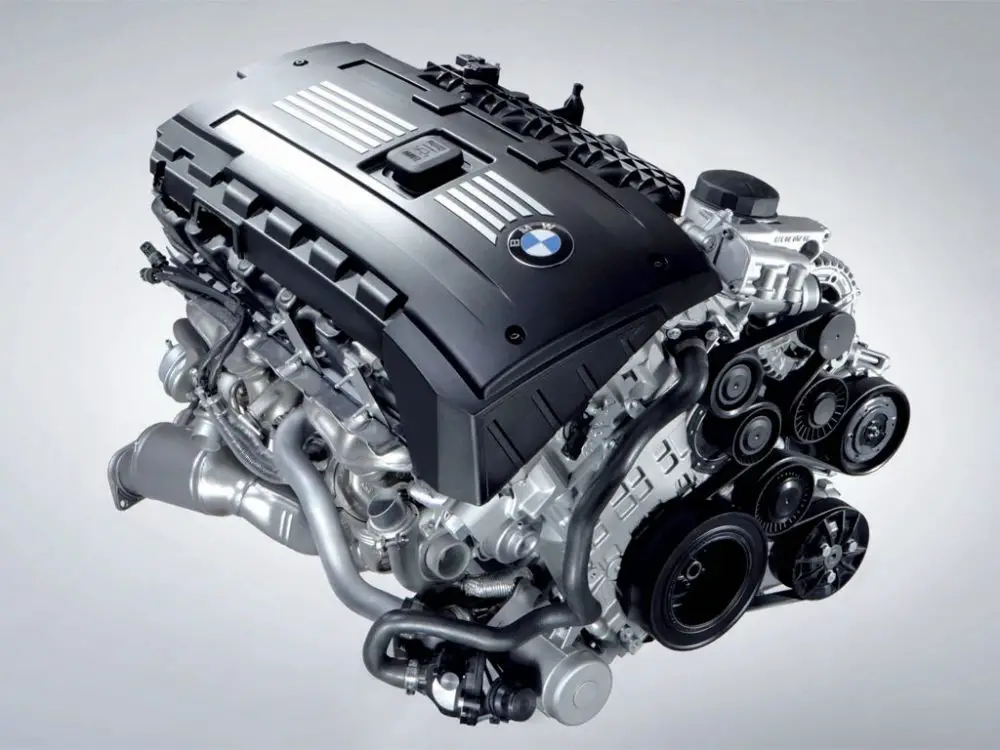
BMW N54 Engine (3.0 Liter – Straight 6 – Twin Turbocharged)
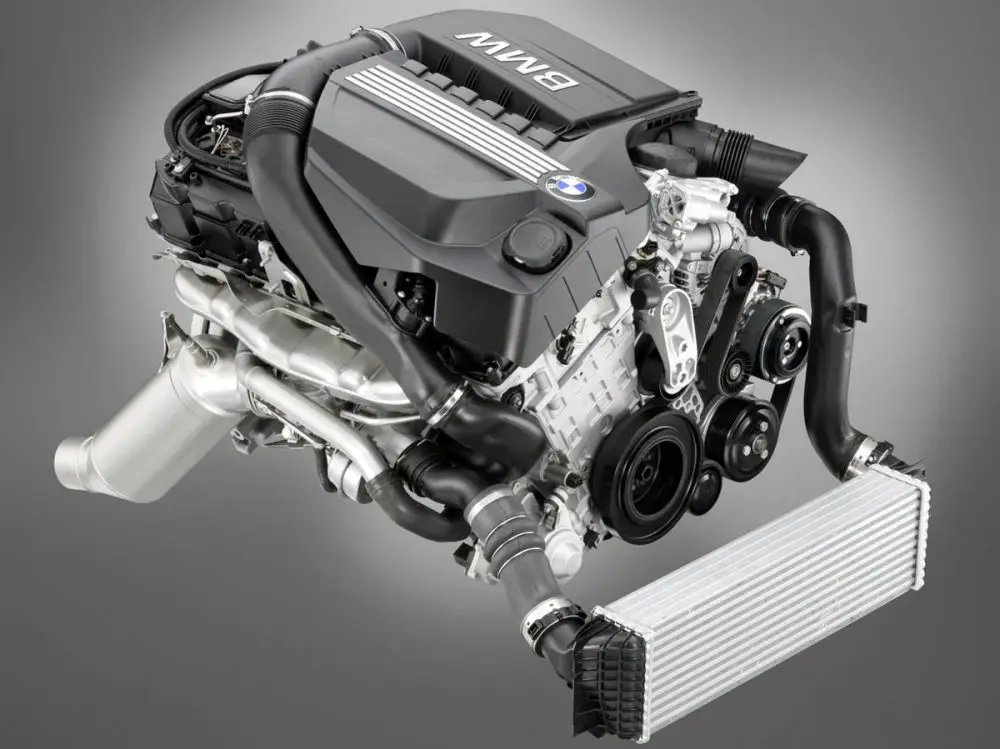
BMW N55 Engine (3.0 L – 6 Cylinder – Turbocharged)
Pricing and Reliability
The price range for a sixth generation BMW 3 Series ranges from 6,000 to 44,000 dollars depending on condition, mileage, and available upgrades. Through JD Power the lowest customer satisfaction rating for a 3 Series BMW was 75 out of 100, which puts it well into the top tier of vehicles.
Conclusion
The 6th generation BMW 3 Series continued what has been a long run of highly successful luxury sedans that has propelled the BMW brand forward. It successfully combines the power and performance of a powerful sedan with top end technologies that people have come to expect with a BMW. Combined with enhanced safety features and an excellent track record the BMW 3 Series continues to be a staple of success.
Popular Blogs
Don’t see the topic you’re looking for? We are still growing out knowledge base, let us know what you want to learn about!
Can BMW Charge at Tesla?
Can BMW Charge at Tesla? As of now, BMWs can't directly charge at Tesla Supercharger stations because Tesla uses a proprietary connector. However, with the right third-party adapter, BMW owners might be able to make it work, but it's always good to double-check...
Are BMW Motorcycles Reliable? A Comprehensive Dive into the World of BMW Bikes
Are BMW Motorcycles Reliable? BMW motorcycles are renowned for their top-notch engineering and build quality, making them a reliable choice for riders around the world. Whether you're hitting the open road or tackling rugged terrains, you can count on a BMW to be a...
Can BMW Take 87 Gas? Discover the Truth Behind the Octane Debate!
Can BMW Take 87 Gas? Certainly! While a BMW can technically run on 87 octane gas, it's not the optimal choice. BMW recommends using premium fuel for most of their models to ensure the best performance and longevity of the engine. So, while it might be tempting to...
Embrace the Future with the BMW Genius Program
You know, they often say that 'knowledge is power'. Well, that's never been truer than in the case of BMW's groundbreaking initiative - The BMW Genius Program. Tailor-made for every BMW enthusiast out there, this program sheds light on the latest technological...
A Comprehensive Dive into the BMW N63: A Blend of Power, Performance, and Precision
Hey there, gearheads! Welcome to a deep dive into the fascinating world of one of the most renowned engines out there: the BMW N63. We're about to embark on an exciting journey, exploring the good, the bad, and the powerful of this engineering marvel. Are you ready...
How BMW TPMS Works: A Comprehensive Guide
When it comes to innovation and performance, BMW never falls short. But how well do you know the intricacies of your vehicle, specifically the Tire Pressure Monitoring System (TPMS)? Let's take a journey to understand how BMW TPMS works. How BMW TPMS Works So,...
Can BMW Keys Be Reprogrammed? Your Comprehensive Guide
Ah, the wonders of technology! It's in everything these days, from the appliances in our homes to the phones in our hands. And of course, it's a big part of our beloved vehicles too, particularly in prestigious brands like BMW. One feature that often leaves car...
How BMW VANOS Works: A Comprehensive Guide to Variable Valve Timing
Introduction Welcome to our comprehensive guide on the fascinating topic of how BMW VANOS works. If you've ever wondered about the inner workings of your BMW engine and how it achieves optimal performance, you're in the right place. In this article, we'll take a...
How BMW Models Work – BMW Model Names Explained
BMW, or Bayerische Motoren Werke, a name synonymous with luxury, performance, and automotive engineering, often leaves many of us scratching our heads when it comes to deciphering their model naming conventions. Do you ever wonder what these series of letters and...
Will BMW Wheels Fit Mercedes? Exploring the Compatibility Between Two Iconic Brands
When it comes to automobiles, BMW and Mercedes-Benz are two of the most renowned and prestigious brands in the world. Both manufacturers have established themselves as leaders in the industry, producing vehicles that exude luxury, performance, and style. However,...
